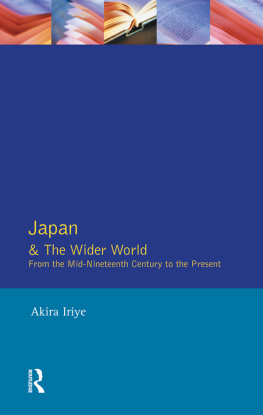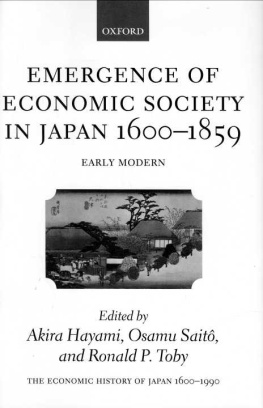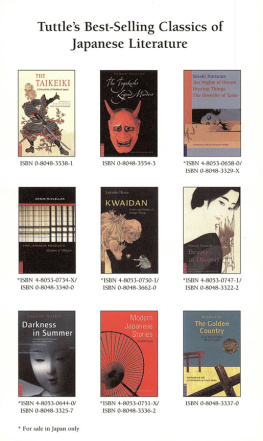
Cultural Astronomy of the Japanese Archipelago
Goto introduces the diverse and multilayered skylore and cultural astronomy of the peoples of the Japanese Archipelago.
Going as far back as the Jomon, Yayoi, and Kofun periods, this book examines the significance of constellations in the daily life of farmers, fishermen, sailors, priests, and the ruling classes throughout Japans ancient and medieval history. As well as covering the systems of the dominant Japanese people, he also explores the astronomy of the Ainu people of Hokkaido, and of the people of the Ryukyu Islands. Along the way he discusses the importance of astronomy in official rituals, mythology, and Shinto and Buddhist ceremonies.
This book provides a unique overview of cultural astronomy in Japan and is a valuable resource for researchers as well as anyone who is interested in Japanese culture and history.
Akira Goto is Professor of Anthropology at Nanzan University, Japan. Born in 1954, Sendai, Japan, Professor Goto obtained his B.A. and M.A. from University of Tokyo (archaeology), followed by his Ph.D. in anthropology from University of Hawaii. He was also the director of Anthropological Institute, Nanzan University from 20102018.
Routledge Studies in the Early History of Asia
The Diary of a Manchu Soldier in Seventeenth-Century China
My Service in the Army, by Dzengeo
Introduction, Translation and Notes by Nicola Di Cosmo
Past Human Migrations in East Asia
Matching Archaeology, Linguistics and Genetics
Edited by Alicia Sanchez-Mazas, Roger Blench, Malcolm D. Ross, Ilia Peiros and Marie Lin
Rethinking the Prehistory of Japan
Language, Genes and Civilisation
Ann Kumar
Ancient Chinese Encyclopedia of Technology
Jun Wenren
Women and the Literary World in Early Modern China, 15801700
Daria Berg
Asian Expansions
The Historical Experiences of Polity Expansion in Asia
Edited by Geoff Wade
The Emergence of Civilizational Consciousness in Early China
History Word by Word
Uffe Bergeton
Cultural Astronomy of the Japanese Archipelago
Exploring the Japanese Skyscape
Akira Goto
Cultural Astronomy of the Japanese Archipelago
Exploring the Japanese Skyscape
Akira Goto
First published in English 2021
by Routledge
2 Park Square, Milton Park, Abingdon, Oxon OX14 4RN
and by Routledge
52 Vanderbilt Avenue, New York, NY 10017
Routledge is an imprint of the Taylor & Francis Group, an informa business
2021 Akira Goto
The right of Akira Goto to be identified as author of this work has been asserted by him in accordance with sections 77 and 78 of the Copyright, Designs and Patents Act 1988.
All rights reserved. No part of this book may be reprinted or reproduced or utilized in any form or by any electronic, mechanical, or other means, now known or hereafter invented, including photocopying and recording, or in any information storage or retrieval system, without permission in writing from the publishers.
Trademark notice: Product or corporate names may be trademarks or registered trademarks, and are used only for identification and explanation without intent to infringe.
British Library Cataloguing-in-Publication Data
A catalogue record for this book is available from the British Library
Library of Congress Cataloging-in-Publication Data
A catalog record for this book has been requested
ISBN: 978-0-367-40798-8 (hbk)
ISBN: 978-0-367-80912-6 (ebk)
Typeset in Times New Roman
by Wearset Ltd, Boldon, Tyne and Wear
Contents
Although there are quite a few studies of cultural astronomy in Japan, the scope of research so far has been limited. The most popular subfield of cultural astronomy has been paleo-astronomy , which is the study of ancient (and often abnormal) astronomical phenomena identified in relation to those that actually occurred using calculation and simulation. Saito Kuniji was one of the pioneers of this field and his work remains popular today (e.g., Saito 1982, 1990).
Another field of cultural astronomy that has been well researched is the study of religious beliefs of Esoteric Buddhism introduced from China. In Esoteric Buddhism, such as the Shingon Mission and the Tendai Mission , astrological rituals have been practiced and these beliefs syncretized with Yin-Yo Theory Onmyodo . These thoughts have also been expressed in fine arts, such as the Star Mandara . In addition, the principal text of the Nichiren Mission , Kokuzo-Gumonji-Ho , associates Venus with Kokuzo-Bosatsu kagarbhya and this belief is distributed widely as an aspect of folk religion (Sano 1994).
In many Esoteric Buddhist temples and the Nichren Mission, star festivals have been held on particular days of the year and are still practiced today (Sano 1994). These religious practices, however, are not held to actually observe stars, since these religions concerned with stars have been developed on the basis of religious thoughts that already had been established in China or the Korean Peninsula. Therefore, the introduction of these ideas did not lead to the observation of stars (Sano 1994).
This is also true of most the popular folk custom concerning stars, the Tanabata. This custom is held annually to celebrate the date of Kengyu (Altair) and Shukujo (Vega) across the Amanogawa (Milky Way). The date should be the seventh day in the seventh month of the lunar calendar when a waxing crescent moon is to be seen as a boat crossing the river (Milky Way). Although Japanese children decorate bamboo branches with beautiful paper and votive paper splits, today they do not seem to be actually praying for stars. Thus, Tanabata has not been held to observe stars but to practice as a step toward the Omon Festival when people welcome ancestral spirits (Renshaw 2011).
Japanese practices observe the moon more than stars or the sun. This tendency is seen in many poems in classical Japanese literature, such as the Manyoshu (Collection of Ten Thousand Leaves). Also, the custom of Otsukimi , or watching the moon, is still practiced today. This is held on the fifteenth day of the eighth month in the lunar calendar in order to praise the full moon by offering rice dumplings with fruits.
Although studies of cultural astronomy related to Esoteric Buddhism, Buddhist fine arts, and the Tanabata custom have been well documented, they are outside the scope of this book. In contrast, this book mainly aims to discuss how people in the Japanese Archipelago have observed and conceived of the stars and the universe, and how the people have used knowledge of stars for everyday life.
In this book, I often use the term Japanese Archipelago instead of Japan. Since Japan is a political term that masks the nations cultural diversity, I intentionally use the geographical term Japanese Archipelago to emphasize the diverse traditions that exist in the regions cultural astronomical practices.
Since the Japanese Archipelago consists of a long chain of islands running from north to south, and also from east to west, the geographical conditions of the archipelago have created diverse ways of using astronomical phenomena for practical purposes. In addition, Japans long history has incorporated different cultural and religious factors into its star lore, such as Chinese influences, Buddhist influences, Shinto beliefs, and several others.











